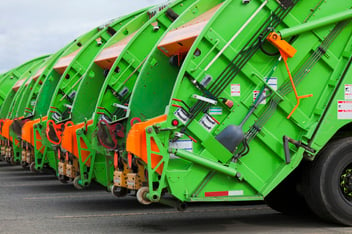We have seen how the Internet of Things (IoT) is a mayor technological trend that is impacting in a wide variety of industries and businesses, and how it also helps to improve logistics and supply chain management.
Considering that 25% of the US market is already using telematics integrated or mobile solutions, and global fleet management market is estimated to grow from USD 8.03 Billion in 2015 to USD 22.35 Billion by 2020, it seams that it’s time to take a look now on how this new way of communication between people and things can actually contribute to daily logistics tasks, in other words, how it can boost fleet management to higher levels of efficiency, accuracy and –at the end of the day- customer happiness.
Device integration
“Systems are moving away from complex, multi-equipment solutions and toward all-in-one, high-performance devices that offer compact performance and value,” RTC Magazine explains.
Years ago, fleet operators had to deal with several devices that collected data about truck or van performance, delivery checking or schedule compliance, which imply training time and costs.
Now, IoT brings offers integrated solutions that are easier to learn and to use, costs are cheaper and uses less space. “Today –RTC adds- a single device can achieve the same powerful connectivity to enable vehicle diagnostics while also acting as the handheld interface for other field service applications.”
Monitoring
Integrated devices allow to constantly monitoring the company assets performance to have a wide visibility of business movement, to detect failures in real time, or to make last –minute changes in order to properly answer a contingency.
In this way, Supply Chain 24/7 says that “with real-time updates on certain conditions such as bad weather or traffic, fleet technicians can better respond and/or prepare.”
“For field technicians -SC24/7 adds- real-time visibility into driver and vehicle performance is critical. This visibility can be used to increase the safety of technicians, reduce damaged inventory and decrease insurance-related costs all of which are critical to an enterprise’s bottom line (…) With the IoT, companies can gain intelligence remotely around their assets in the field, allowing them to facilitate needbased maintenance and eliminating unnecessary and/or reactive responses.”
According Inbound Logistics, this kind of solutions also provides useful “information about a traffic jam and potential delay before the trip starts has much higher value than getting that alert when one is already stuck in the traffic. This context-aware intelligence can enhance the supply chain visibility by implementing IoT.”
Checking deliveries
The bottom line, the final contact with the client, can also be empowered by these kind of fleet solutions. “Consider –RTC set an example- the delivery shipment that is damaged in transit and refused upon delivery; with capture of the right real-time data, a replacement delivery can be managed immediately instead of after data is reviewed and lengthy paperwork is processed. “
Besides, drivers can access to real-time information thanks to high-speed connectivity in order to correct “mistakes that can reduce costly paperwork and delays. Further, integrated GPS and e-compass technologies ensure shipments are delivered on time by optimizing driver routes, and enabling monitoring by the operator.”
Summarizing, IoT brings to fleet management new opportunities to improve service and to provide a better client experience. As RTC explains, “customers awaiting delivery or service can be alerted in real time to drivers running late or early, a simple communication that can elevate the public perception of a company as being at the top of its game.”
Is your fleet management already testing fleet software solutions integrated with the Internet of Things? Please, share your experience.



